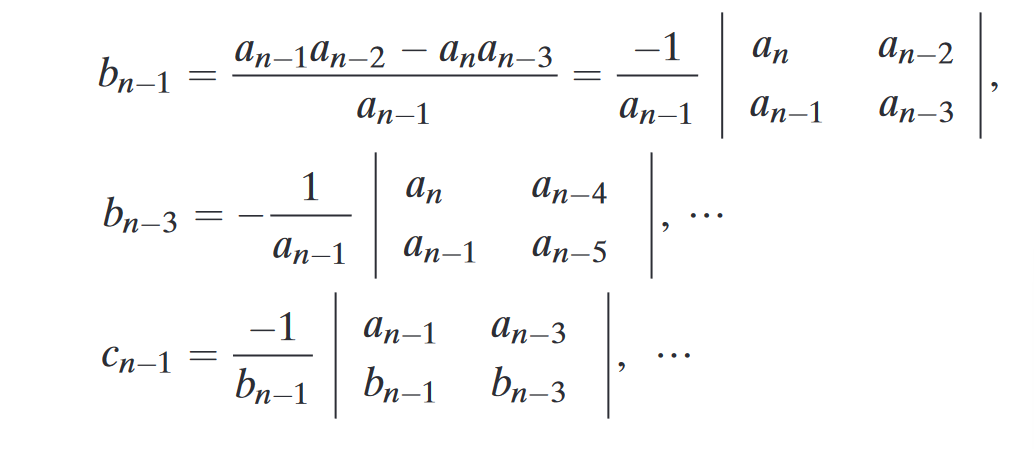In control theory, the Routh-Hurwitz criterion is a necessary and sufficient criterion for proving the BIBO stability of LTI systems. For a characteristic polynomial (the denominator of the transfer function) of a stable system , the number of roots of with positive real parts must be equal to the number of changes in sign of the first column of the Routh array.
For a stable system, there must be no changes in sign in the first column.
The Routh array is given by:
 Where the corresponding and terms are given by:
Where the corresponding and terms are given by:

Interpretation
We have several cases for the elements in the first column:
- No element is zero — then by definition, all the coefficients must be positive or all must be negative.
- There’s a zero in the first column, but some other elements of the containing row are non-zero — we can in fact replace that 0 with an arbitrarily small positive number that can approach zero.
- There’s a zero in the first column, and all other elements of the containing row are zero — in this case, we look at the row before the zero row, which contains the auxiliary polynomial . The auxiliary polynomial reveals the roots of .
- Repeated roots of the characteristic equation on the -axis — if we have duplicated auxiliary polynomials, we have repeated roots on the -axis, implying the system is unstable.